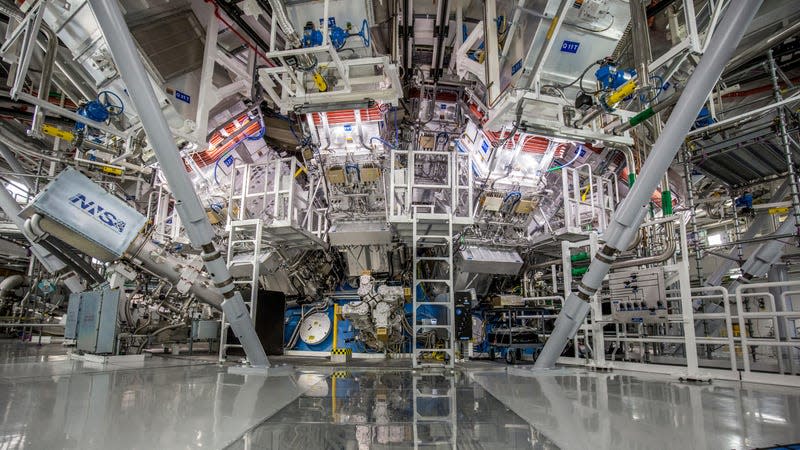Nuclear Fusion Scientists Successfully Recreate Net Energy Gain

While the scientific community has been recently focused on the feasibility of an alleged room-temperature superconductor, U.S. scientists revealed this week that they have successfully recreated a pivotal fusion experiment.
Reuters reports that scientists with the Lawrence Livermore National Laboratory’s National Ignition Facility in California repeated a fusion ignition reaction. The lab’s first breakthrough was announced by the U.S. Department of Energy in December. While the previous experiment produced net energy gain, a spokesperson from the lab told the outlet that this second experiment, conducted on July 30, produced an even higher energy yield. While the laboratory called the experiment a success, results from the test are still being analyzed.
Read more
Lawrence Livermore National Laboratory did not immediately return Gizmodo’s request for comment.
While fusion reactions are a staple in physics, scientists previously had to grapple with the notion that they required more energy in than they produced, making the net energy gain in both reactions a noteworthy result. The Department of Energy revealed in its December announcement that the fusion test conducted by the laboratory at that time required 2 megajoules of energy while it produced 3 megajoules of energy. The previous fusion experiment conducted at the National Ignition Facility used 192 lasers focused on a peppercorn-sized target. Those lasers create temperatures as high as 100 million degrees Fahrenheit and pressures of over 100 billion Earth atmospheres in order to induce a fusion reaction in the target.
Nuclear fusion has long captured the imagination of scientists and those working toward cleaner energy production, and experts say it could allow humans to pivot away from the dirty grips of carbon-based fuel. Until now, energy producing fusion most famously occurred in the cores of stars like our own Sun, where atoms collide into each other and release an intense amount of pressure in the form of light and heat.
While the development of actual fusion power stations is likely still decades away, these manmade breakthroughs demonstrate the potential exists to harness the same physics that fuels the stars in order to potentially develop our own clean energy in the form of laser-induced fusion right here on Earth.
More from Gizmodo
Sign up for Gizmodo's Newsletter. For the latest news, Facebook, Twitter and Instagram.

